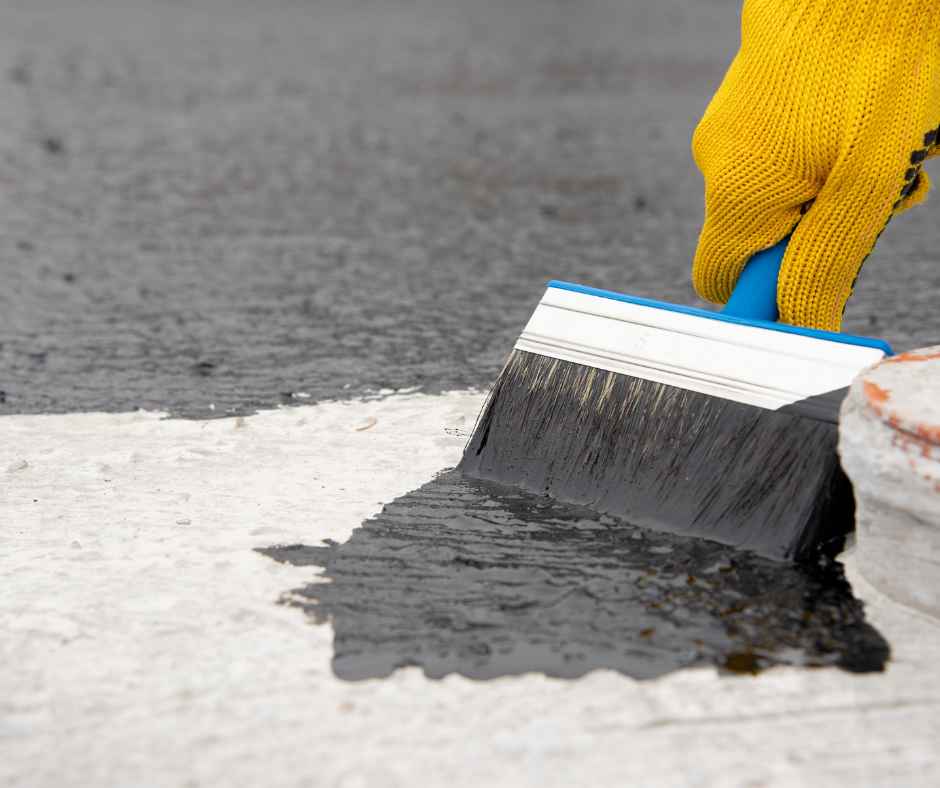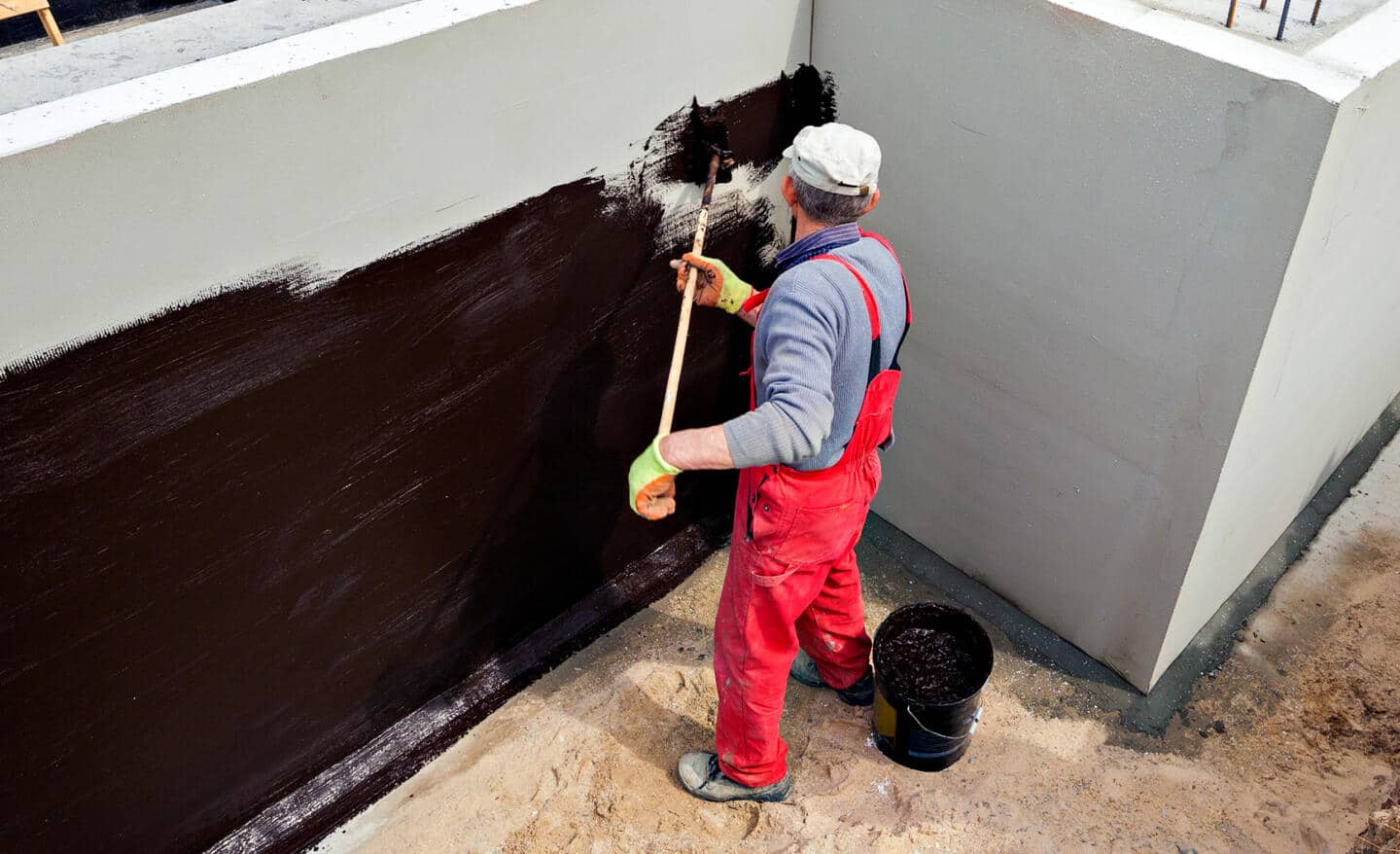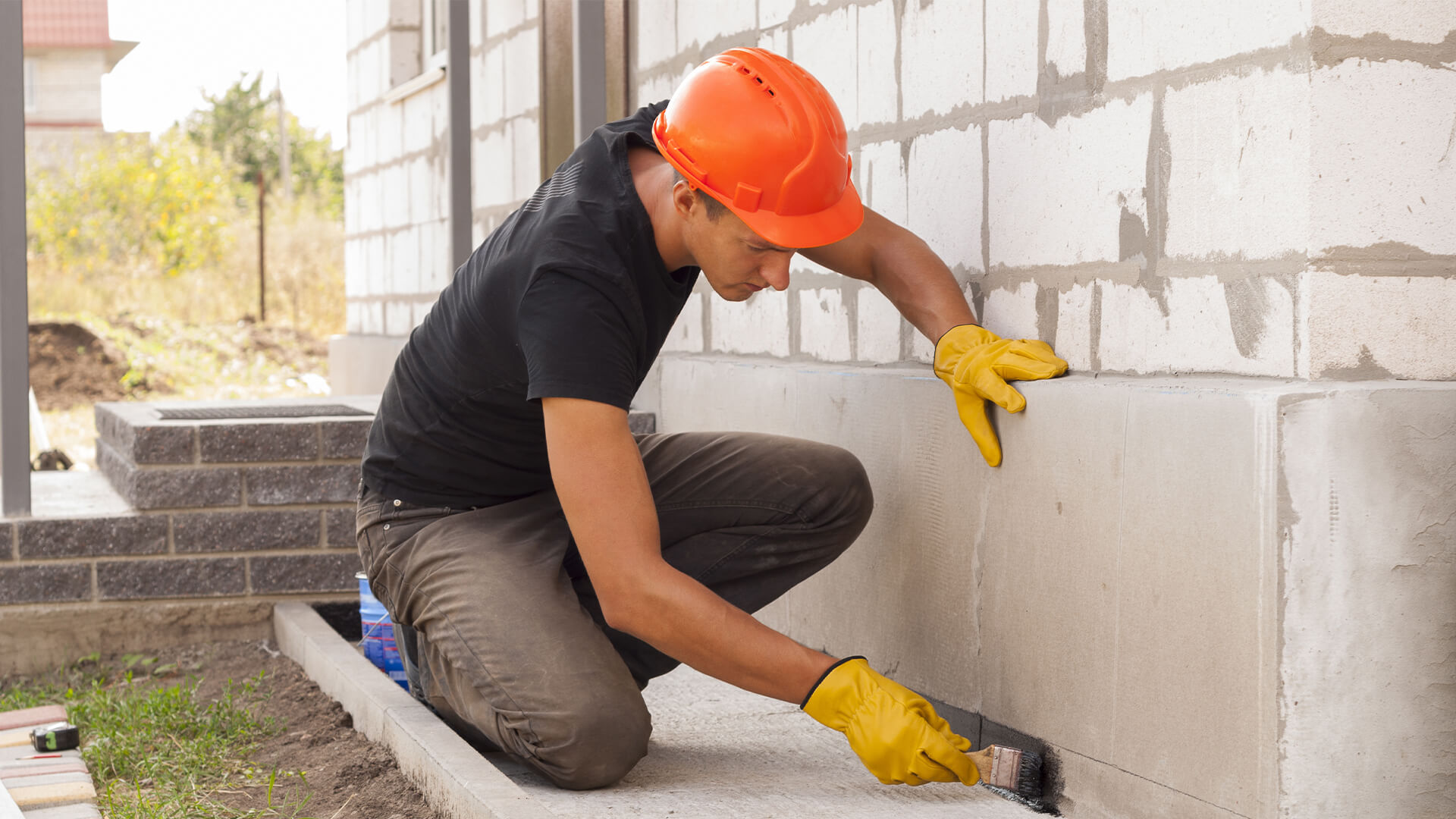
Everything about Waterproofing: Understanding Its Importance and Benefits for Your Home
Waterproofing is a necessary facet of home maintenance that many home owners neglect. It offers to secure frameworks from the damaging effects of water infiltration, which can result in considerable concerns in time. Understanding the various techniques and their importance can help homeowners make informed decisions. As the discussion unfolds, the real inquiry remains: how can efficient waterproofing transform a home's strength versus moisture-related hazards?
What Is Waterproofing and Just How Does It Work?
Waterproofing is an essential procedure developed to secure buildings and structures from water infiltration. It entails the application of numerous products and techniques that produce a barrier, stopping water from permeating surfaces. Usual waterproofing techniques include making use of membranes, finishes, and sealers, which can be related to roof coverings, structures, and wall surfaces. Each method is chosen based on the specific demands and problems of the structure.The efficiency of waterproofing depends on proper setup, making certain that all locations are properly covered and sealed. Products such as bituminous membrane layers, fluid waterproofing compounds, and cementitious finishes are frequently used, each offering one-of-a-kind benefits. In addition, water drainage systems might be incorporated to reroute water away from susceptible areas, better boosting protection. Generally, waterproofing not only safeguards structural integrity yet additionally improves longevity, making it a critical consideration in construction and renovation jobs.
The Significance of Waterproofing for Property owners
Home owners deal with various difficulties in keeping their residential properties, and one of the most significant problems is water damage. This problem can develop from various sources, including heavy rains, flooding, and plumbing failings. When left unaddressed, water damages can bring about extreme architectural problems, mold growth, and pricey fixings. Waterproofing stands as an important safety net that protects homes from these possible hazards.
Common Waterproofing Methods and Strategies
When taking into consideration waterproofing methods, house owners can choose from a range of reliable remedies. Outside waterproofing solutions focus on preventing water from passing through the structure, while interior waterproofing methods deal with moisture issues once they have happened. Recognizing these options is essential for preserving a dry and healthy home atmosphere.
Exterior Waterproofing Solutions
To secure a residential or commercial property from water invasion, different outside waterproofing solutions can be used, each tailored to the particular demands of the structure. One common technique is the application of water resistant membranes, which develop an obstacle against wetness. These membranes can be either liquid-applied or sheet-based, depending upon the setup demands. One more reliable technique includes using drainage systems, such as French drains, that redirect water far from the foundation. Additionally, using outside sealers can aid secure surface areas from water infiltration and deterioration. Landscape design remedies, including grading and appropriate drainage, can additionally add notably to avoiding water accumulation around the foundation. Each of these methods plays a necessary function in boosting the long life and durability of the property.
Inside Waterproofing Techniques
Interior waterproofing methods are vital for safeguarding a home against wetness and water damages. Usual methods consist of the application of sealants and membranes, which produce an obstacle on walls and floors to stop water infiltration. Inside water drainage systems, such as sump pumps and French drains, successfully redirect water far from prone locations. Additionally, vapor obstacles can be mounted to block dampness from permeating through wall surfaces and floorings, particularly in basements and creep areas (Sump pump installation & replacement Omaha). Routine maintenance and inspection of these systems are very important to ensure their effectiveness. Moreover, addressing any kind of pipes leakages or condensation issues immediately can greatly boost the total waterproofing technique. Together, these methods provide property owners with a complete strategy to decreasing the threat of water-related issues

Indications Your Home Requirements Waterproofing
House owners ought to be mindful of key signs that their building may need waterproofing. Noticeable water damages, moldy odors, and frequent mold and mildew development are important indications that dampness is endangering the honesty of the home. Addressing these problems without delay can stop further damage and guarantee a healthier living setting.
Noticeable Water Damages
Visible water damages functions as a clear indicator that a home might need waterproofing measures. House owners should be watchful for indications such as water spots on wall surfaces or ceilings, peeling paint, and deformed flooring. These visible signs typically symbolize underlying dampness issues that, if left unaddressed, can cause much more extensive damage and pricey repairs. Mold growth can also occur, though it will be gone over in the next section. Furthermore, property owners need to inspect basements and creep spaces for wetness or efflorescence on concrete surface areas, which suggests wetness penetration. Discovering these indicators early can help protect against further wear and tear of the home's architectural honesty. Timely waterproofing steps can protect the investment and preserve a healthy and balanced living atmosphere.
Musty Odors Existing
Moldy odors are usually an indication that moisture is remaining in hidden areas of a home, suggesting the need for waterproofing solutions. These unpleasant smells often arise from moist cellars, crawl spaces, or behind wall surfaces, where water seepage may not be instantly noticeable - Drainage & waterproofing company Omaha. Home owners should pay very close attention to these odors, as they recommend that excess humidity is trapped, possibly bring about further damages. The existence of stuffy scents can endanger indoor air high quality, influencing the health and comfort of citizens. Neglecting this cautioning indicator can bring about extra extreme concerns, making prompt analysis and activity necessary. By resolving waterproofing requirements, homeowners can get rid of mildewy odors and create a healthier living setting
Frequent Mold And Mildew Development
Constant mold and mildew growth is a clear indication that a home may be experiencing moisture issues, demanding waterproofing procedures. Mold thrives in damp environments, making it a significant worry for property owners. Indications of mold can include dark areas on walls, ceilings, and around home windows, along with a consistent stuffy scent. If mold and mildew appears repeatedly regardless of cleaning efforts, it suggests underlying wetness troubles. This can arise from leaks, insufficient drain, or high humidity degrees. Ignoring these signs can bring about architectural damage and health threats, especially for individuals with respiratory system issues. Addressing use this link waterproofing promptly can help reduce mold and mildew growth, guaranteeing a much safer and much healthier living setting. Property owners ought to consider expert assessments liquid bitumen waterproofing to identify the degree of the wetness problem.
The Long-Term Advantages of Spending in Waterproofing
Spending in waterproofing uses homeowners an extensive feeling of safety and comfort, recognizing their residential property is safeguarded versus moisture-related damages. This positive approach significantly minimizes the threat of architectural concerns, such as timber rot and foundation cracks, which can cause expensive repair work with time. In addition, waterproofing aids maintain interior air top quality by reducing mold and mildew development, which can have adverse wellness effects for occupants.Furthermore, waterproofing boosts the durability of a home, ultimately maintaining its value. A well-protected residential property is extra eye-catching to potential buyers, as they are less most likely to run into concealed dampness issues. This investment likewise adds to power effectiveness; appropriately sealed rooms stop drafts and minimize heating and cooling expenses. Overall, the long-term benefits of waterproofing not only guarantee the structural integrity of a home yet also cultivate a healthier living environment and reinforce the building's marketability.
Selecting the Right Waterproofing Specialist for Your Home
How can a home owner warranty they choose one of the most certified waterproofing expert for their needs? The process begins with detailed research study and acquiring several quotes. Property owners need to seek professionals with a strong credibility, verified credentials, and substantial experience in waterproofing. Inspecting on-line testimonials and requesting references can offer useful understanding into a specialist's integrity and top quality of work.Moreover, it is vital to ask concerning the certain waterproofing methods each expert employs, as well as the products made use of. House owners need to validate that the picked contractor is licensed and insured, which safeguards against possible obligations. A trustworthy professional will also use a comprehensive agreement outlining the extent of work, timeline, and warranty info. By focusing on these standards, home owners can make informed choices, inevitably causing boosted security versus water damages and a reliable waterproofing solution customized to their home's needs.
Regularly Asked Questions
Can Waterproofing Be Done in Winter Months or Cold Climate?
Waterproofing can be challenging during winter season or cool climate due to reduced temperatures influencing materials' bond and curing processes. However, specialized products designed for chilly conditions can allow effective waterproofing applications even in winter season.
Just how Typically Should I Water Resistant My Home?
The frequency of waterproofing a home normally relies on different elements, including environment and worldly top quality. Professionals advise assessing problems each year and reapplying every five to 10 years, or earlier if considerable wear is noticeable.
Does Waterproofing Affect Home Resale Value?
Waterproofing can considerably influence a home's resale worth (Water Solutions). Potential buyers commonly view waterproofing as a protect against water damage and mold and mildew, boosting the building's charm and bankability, potentially bring about greater offers and quicker sales
Is Do It Yourself Waterproofing Effective for All Houses?
The performance of DIY waterproofing varies by home. Factors such as building age, environmental problems, and existing damage influence results. Property owners must evaluate their particular circumstances before trying DIY options to assure lasting security.

Are There Eco-Friendly Waterproofing Options Available?
Environment-friendly waterproofing options do exist, my link consisting of all-natural sealants like beeswax and plant-based products. These options lessen environmental impact while successfully securing frameworks from water damages, appealing to house owners seeking lasting choices for their waterproofing requires.